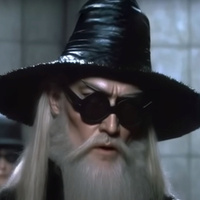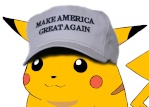https://www.theguardian.com/australia-news/live/2020/dec/04/australia-news-live-china-row-simmers-nsw-awaits-covid-case-numbers
Ћина-Средње Краљевство

- Posts : 52641
Join date : 2017-11-16
- Post n°1
 Ћина-Средње Краљевство
Ћина-Средње Краљевство
To ovo?
https://www.theguardian.com/australia-news/live/2020/dec/04/australia-news-live-china-row-simmers-nsw-awaits-covid-case-numbers
https://www.theguardian.com/australia-news/live/2020/dec/04/australia-news-live-china-row-simmers-nsw-awaits-covid-case-numbers

- Posts : 41709
Join date : 2012-02-12
Location : wife privilege
- Post n°2
 Re: Ћина-Средње Краљевство
Re: Ћина-Средње Краљевство
Ни мене не занима да ли је произвођач процесор направио да вара на тесту - ако ће да користи ту варку и кад ради за мене.
_____
the more you drink, the W.C.
И кажем себи у сну, еј бре коњу па ти ни немаш озвучење, имаш оне две кутијице око монитора, видећеш кад се пробудиш...

- Guest
- Post n°3
 Re: Ћина-Средње Краљевство
Re: Ћина-Средње Краљевство
"sexist communist thugs"
Biće čupavo kad praaavi levičari vide ovo.
Biće čupavo kad praaavi levičari vide ovo.

- Posts : 11663
Join date : 2018-03-03
Age : 36
Location : Hotline Rakovica
- Post n°4
 Re: Ћина-Средње Краљевство
Re: Ћина-Средње Краљевство
https://www.wsj.com/articles/china-is-national-security-threat-no-1-11607019599?mod=djemalertNEWS




_____
Sve čega ima na filmu, rekao sam, ima i na Zlatiboru.
~~~~~
Ne dajte da vas prevare! Sačuvajte svoje pojene!

- Guest
- Post n°5
 Re: Ћина-Средње Краљевство
Re: Ћина-Средње Краљевство
China’s Radical New Vision of Globalization
President Xi’s vision of “dual circulation” is a darkly pessimistic economic strategy, fit for a new Cold War.
BY JAMES CRABTREE
DECEMBER 10, 2020
SINGAPORE — Back in August, Chinese President Xi Jinping met with a group of economists in Beijing. “In the coming period, we will face more and more headwinds,” he explained, using unusually blunt language. Without naming names, Xi talked about China’s worsening trade and technology war with the United States under President Donald Trump, set against a backdrop of growing certainty in Beijing that America is bent on containing his nation’s geopolitical rise.
But then came the interesting part. “Since the beginning of this year, I have said on many occasions that we must promote the formation of a new development pattern, in which domestic and international cycles are the mainstay, and the domestic and international dual cycles promote each other,” Xi said. To an outsider, this might seem unremarkable, cloaked as it is in the elliptical phraseology that often marks Chinese economic ideas. But the “dual circulation” strategy Xi outlined actually represents a radical new understanding of globalization and of China’s place within it.
More than just a buzzword, dual circulation describes the deeply pessimistic worldview that has settled over Beijing. Once China’s leaders saw opportunity in globalization. Now, they expect the U.S. and its allies to deny China the technology it needs to build “a modern socialist country” by mid-century, meaning a wealthy superpower fit to rival the U.S. Although likely to be less pugilistic, Beijing rightly believes an incoming Biden administration will also press forward with policies designed to stop advanced technologies finding their way into Beijing’s hands. Chinese thinking has long valorized self-reliance, dating back to ideas developed by former Chinese leader Mao Zedong during the country’s civil war, which ended with the foundation of the People’s Republic of China in 1949. Now, Trump’s tariffs, as well as his campaigns against companies like Huawei and TikTok, have given new impetus to the modern form of self-reliance Xi dubs “internal” development.
Many experts have noted a changing Western consensus on China, as leaders in Washington abandoned the idea that economic modernization would inevitably lead to political liberalization in Beijing. But there has been a comparable shift in China’s internal conversation on the West too. Beginning with semiconductors but potentially expanding to all manner of other areas, China now expects it will have to develop technologically on its own. Xi’s new theory now sits at the heart of the country’s 14th five-year plan, which covers development from 2021 to 2025, and was unveiled in draft form in October. The result will accelerate China’s decoupling from the West, while also increasing the importance of trading links forged with other parts of the world — for instance, via Xi’s signature Belt and Road Initiative. Put more bluntly, while the world was distracted by the drama of the U.S. presidential election, Xi quietly unveiled an economic strategy fit for a new Cold War. Both for China and for globalization itself, the results are likely to be profound.
To see how much China’s consensus has changed, recall Xi’s remarks at Davos in 2017. There, he portrayed globalization not as a threat, but as an inevitability. “The global economy is the big ocean that you cannot escape from,” he suggested. “China will vigorously foster an external environment of opening-up for common development.” Just as Trump was turning against the idea, China would act as steward of the existing global order. It would even help to remedy many of the problems that rapid integration had caused, Xi argued, from economic inequality to climate change.
Three years later and, under dual circulation, things look much different. The idea splits the world into two systems. First comes external circulation, meaning China’s global trade, but also the way it invites foreigners into its domestic economy. This was the focus of Xi’s Davos remarks and the approach that powered his country’s decades of rapid growth, transforming China into an exporting powerhouse. The second component is then internal circulation, meaning domestic demand from Chinese consumers, but also domestic supply chains and “made in China” technologies.
This division shares something in common with “reform and opening up,” a phrase that has dominated China’s economic thinking for decades. That idea suggested Beijing should reform its domestic (or internal) economy to make it more market-led, while also opening up to the (external) world via globalization, gaining new ideas, production techniques and technologies along the way. Dual circulation also echoes longstanding attempts to wean China off a growth model dominated by exports and infrastructure investment and build instead the kind of consumption-led economy common in rich countries.
Such attempts have been only partially successful. A decade ago, about 34% of China’s economy came via domestic consumption, less than half the level in the U.S. at the time. By 2019, this has reached just 39% — progress, of a sort, but hardly dramatic. When the phrase dual circulation first emerged earlier this year, many saw it as merely yet one more push toward this long-term objective of Chinese internal economic rebalancing.
It is China’s deteriorating geopolitical environment that marks dual circulation as a decisive break from the past, however. “China thinks there is a good prospect of even worse relations with the U.S. and its friends in the coming years,” I was told recently by Li Mingjiang, a Chinese political scientist based in Singapore and long-time observer of Beijing’s intricate political economy. “So, it needs to do something about it.”
It is not hard to see why. Trump’s tariffs and battles over soybeans generated more headlines, but it is advanced technology that really matters in Beijing. China is a global tech leader in some sectors, from online payments to artificial intelligence. But it lags in others. Despite its geopolitical heft, it still remains a firmly middle-income economy, with a gross domestic product per capita of roughly $9,700 — about on par with Kazakhstan and roughly half that of Greece. Access to cutting-edge technology is critical in changing this, especially as its economy moves away from the kind of basic exported manufactured goods that have long dominated its growth model.
Over recent decades, China has had many routes to acquiring such technology. Often, it simply bought it, as when Chinese companies snapped up everything from Rolls Royce jet engines to Qualcomm semiconductors. Foreign businesses rushed to set up Chinese operations, often as part of local joint ventures, eager to tap into a vast consumer market. Chinese businesses bought foreign technology groups, while Chinese academics and scientists built partnerships at the world’s best universities. Beijing employed darker methods too, from forced technology transfer to outright intellectual property theft. But there were always plenty of legitimate avenues to go with them.
Now, many of these routes are closing fast. Rather than tariffs, America’s “entity list” has proved its most potent weapon. Back in 2016, President Barack Obama first used this process in accusing ZTE, China’s second-largest telecoms supplier, of selling U.S. technologies to Iran, crippling the Chinese company in the process. Trump then escalated this approach, banning U.S. businesses from trading with dozens of Chinese enterprises, from state-owned giants to niche artificial intelligence providers with links to Xinjiang and its embattled Muslim Uighur minority. More recent measures unveiled this August hit foreign suppliers too, for instance stopping semiconductor operators in Taiwan from selling to Chinese entities. Huawei has been one high-profile victim, leading experts to question whether China’s state-linked tech champion can survive.
What started with semiconductors is unlikely to end there, however, hence dual circulation’s underlying pessimism. Under Trump, the U.S. has unveiled a range of further measures limiting China’s technology access, from its 2018 Export Control Reform Act to more targeted measures in areas like geospatial imagery software. Allies in Europe are being cajoled to follow suit. Many Western governments have also acted to stop China from buying up advanced tech companies entirely, while also limiting academic collaborations with Chinese partners. The recent battle over TikTok was illustrative too, showing how rapidly the U.S. has lowered the bar on what counts as a national security threat, a category that now includes not just critical 5G telecoms architecture of the sort provided by Huawei, but also jocular teenage social media platforms.
Elsewhere, U.S. strategists are particularly vexed by China’s doctrine of “military-civil fusion,” which mandates that technologies acquired by China’s private sector must be shared with its armed forces. The problem is that, when you look hard enough, almost anything can potentially be seen as a dual-use technology, from nuclear equipment and renewable energy batteries to civilian aircraft, drones and autonomous vehicles.
Then there are still gloomier scenarios. I spoke recently with a well-connected Chinese academic with close ties to Beijing’s policy-making circles, to try and understand more about dual circulation’s development. “China is preparing ‘plan B,’ which at first is what happens when international supply chains are shut off,” he suggested, while asking to remain anonymous. China now assumes that its technology access will shrink no matter what actions Xi takes, he went on. But then there is the more alarming question of what more disruptive actions China itself might actually begin. “A lot of this is about preparations for a possible war across the Taiwan Straits,” the academic said.
Officially, China aims to reunify with Taiwan by 2049. But Beijing has toughened its language of late, removing talk of “peaceful reunification” from government documents. Many analysts think Xi plans to force the issue sooner rather than later, in pursuit of a long-term national objective that could cement his legacy as a truly great national leader. Yet any attempt at unification using military means, even in scenarios short of war, would be highly risky. China would almost certainly be hit by global sanctions, providing yet one more justification for the urgent development of domestic technology.
Whatever China’s thinking, developing domestic technology is easier said than done. China has pushed similar plans before, including its recent “Made in China 2025” scheme to develop world-leading capabilities in nearly a dozen sectors, from ships to power equipment and advanced industrial materials. Chinese officials have spent decades sinking funds into semiconductors in particular, only to find their products still lag far behind world leaders such as the U.S. and Taiwan. Just pouring in money is often ineffective. “We need to realize that new [technologies] aren’t like roads and bridges that can be completed with a lot of funding,” as one senior Chinese official recently put it. “A lot of government-funded projects may end up going nowhere. … We need to let market forces decide how much and where to invest.”
Quite how dual circulation will work in practice is hard to tell so far, as is often the case when China launches a big new idea. Much the same was true for Xi’s Belt and Road Initiative infrastructure scheme back in 2013, which gradually transformed from a vague slogan into a globe-spanning behemoth with investments totaling hundreds of billions of dollars. Dual circulation’s details will take time to flesh out, beginning when the full details of China’s next five-year plan emerge in early 2021. But Beijing has plenty of measures at its disposal, from industrial policies that plough cash into specific technologies to investment in more fundamental scientific research. Other reforms will aim to make it easier to raise capital or help entrepreneurs start technology businesses, while a broader set of policy changes aims to boost domestic consumption overall, for instance by facilitating urbanization or allowing greater mobility of labor by scrapping China’s restrictive “hukou” system of local work permits.
Will it work? Some elements of Xi’s approach look similar to the more established economic idea of “import substitution.” This largely discredited theory led many emerging economies to block imports of foreign goods in an attempt to force consumers to buy domestically-produced products instead, from cars to machine parts. Yet while this failed to spur development in smaller countries like Sri Lanka and Tanzania, it might work better in an economic giant like China, with its 1.4 billion consumers, clear economies of scale and heavy tradition of investment in research and development.
One further question is exactly how pessimistic China will be. Beijing might adopt a wait-and-see approach, moving to develop local options only when it is indeed cut off from global supply chains. But developing new domestic technologies can take decades, while the humiliation of seeing companies like ZTE and Huawei hobbled by sanctions has scarred policymakers in Beijing. If China thinks there is a risk it will eventually be cut off, it may well begin developing alternatives now — a step that is likely to come with significant short-term costs.
China’s leadership is at pains to argue that dual circulation does not in fact mark a retreat into isolation. Xi stressed this point in another recent speech, this time in October to mark the 40th anniversary of the Shenzhen Special Economic Zone, whose launch in 1980 is often credited as the starting point of China’s long march back into the global economy. China would continue to seek foreign investment, he argued: “The new development pattern is not a closed domestic circulation, but an open domestic and international dual circulation.” Some foreign companies may even find it easier to enter China’s market in the future, albeit only in a handful of sectors like financial services and consumer goods. But Xi’s plans clearly do place more emphasis on both domestic production and state control. China has drifted steadily in a statist direction under his rule, a trend that now only seems likely to accelerate, especially in strategic areas already dominated by state-owned enterprises, like telecoms or defense.
This change will be noticed in particular in sectors linked to China’s core digital infrastructure, a fact that also helps to explain one of the most intriguing episodes in recent Chinese economic history: the last-minute cancellation in October of the floatation of Ant Group. The Alibaba affiliate was set to become the world’s largest-ever initial public offering, potentially raising as much as $37 billion, until Chinese regulators claimed the fintech giant had failed to comply with regulatory changes designed to protect consumers from the mis-selling of financial products. Speculation soon focused on Jack Ma, Alibaba’s charismatic founder, and his recent speech criticizing China’s state-run banks. But Ant’s fall from grace illustrates a wider push by China’s state to exert control over the high-flying private tech businesses that dominate its consumer internet space, including both Alibaba and Tencent.
Whatever its rationale, many of dual circulation’s economic repercussions will be harmful. Chinese economic growth is almost certain to be lower, imperiling Xi’s target of doubling the size of China’s economy by 2035. Levels of innovation and productivity may stagnate too, as government funds are channeled into wasteful white elephant investment projects. There could be significant ramifications for the global economy too. Gradual economic decoupling between China and the West will be more significant than the divisions of the original Cold War, given so little prior trade existed between the U.S. and the Soviet Union bloc.
This does not mean China will retreat wholesale from globalization. Dual circulation actually makes it all the more important that China cultivates deep relationships with those advanced economies that are still keen to do business, including those on its doorstep in Asia, like Singapore and South Korea. It also makes it more likely that China will focus economic efforts on its Belt and Road Initiative partner nations across Southeast and Central Asia as well as in Africa and Latin America. Such an approach would fit well with China’s longer-term ambitions for the Belt and Road Initiative too, which always aimed at more than simply dotting the globe with new ports, railways and power stations. Instead, China’s intention is the gradual creation of a new economic “sinosphere,” in which global networks of trade and innovation that once focused on the industrialized West flow back and forth to China instead.
In all this, dual circulation remains a highly risky strategy for China, not least given the prospect it brings of lower growth denting the legitimacy of China’s ruling Communist Party. Beijing has brought much of this policy choice on itself, however. Under Xi, China’s politics have grown more authoritarian, its economy more statist and its foreign policy more threatening, both to its neighbors in Asia and to the West. Its drive to acquire new technology over recent decades has been marred both by intellectual property theft, as well as its myriad of broken promises to liberalize its state-dominated economic model.
Yet, dual circulation comes with equally forceful dilemmas for the West too. If the U.S. does aspire to keep a global, open, rules-based system in the future, it must weigh carefully the risks that come from pushing China to step more decisively away from that model. This leaves awkward questions for President-elect Biden. At one level, China’s drive for domestic innovation might actually succeed, leaving Western nations unable to access potentially valuable Chinese technologies in the future. At another, a Chinese leadership with less of a stake in the global technology ecosystem may become a more disruptive global actor in other areas — with Taiwan the most obvious and alarming potential example.
Dual circulation ultimately suggests that Trump’s tenure has been more influential than his critics would like to admit. He lost America’s recent election, but his erratic and aggressive policies have succeeded in convincing Chinese elites that the U.S. is now irrevocably set on blocking China’s technological rise. Biden must weigh carefully whether that is indeed his intention too. Much depends on his answer.
China's Radical New Vision of Globalization - NOEMA (noemamag.com)

- Posts : 52641
Join date : 2017-11-16
- Post n°6
 Re: Ћина-Средње Краљевство
Re: Ћина-Средње Краљевство
b...but, čika Si, jel to znači da ćemo i dalje moći da budemo najbolji drugari, ne zaboravljajući naše bratske veze sa bratskom Rusijom i naše strateško opredeljenje za članstvo u EU uz najbolje odnose sa Amerikom?

- Posts : 52641
Join date : 2017-11-16
- Post n°7
 Re: Ћина-Средње Краљевство
Re: Ћина-Средње Краљевство
Inače , mislim da nema tu povratka.

- Posts : 8382
Join date : 2014-10-28
Location : imamate of futa djallon
- Post n°8
 Re: Ћина-Средње Краљевство
Re: Ћина-Средње Краљевство
uzgred, bukvalno prepis odnosa silikonske doline i CIA/NSA/defense contractor-aElsewhere, U.S. strategists are particularly vexed by China’s doctrine of “military-civil fusion,” which mandates that technologies acquired by China’s private sector must be shared with its armed forces.

_____
i would like to talk here about The Last of Us on HBO... and yeah, yeah i know.. the world is burning but lets just all sit and talk about television. again - what else are we doing with ourselves ? we are not creating any militias. but my god we still have the content. appraising content is the american modus vivendi.. that's why we are here for. to absorb the content and then render some sort of a judgment on content. because there is a buried hope that if enough people have the right opinion about the content - the content will get better which will then flow to our structures and make the world a better place

- Posts : 168
Join date : 2020-09-08
- Post n°9
 Re: Ћина-Средње Краљевство
Re: Ћина-Средње Краљевство
Никаквог новог хладног рата неће бити, нити се то може поновити са Кином. Трамп је једном рекао да је Кина већ победила што је тачно. Биће ту неких опаких изјава али ничега суштинског јер би то угрозило цео свет економски. Данас глобална економија зависи од кинеског кредитног импулса и они су водећа економија света. О томе је СССР могао само да сања. Трамп када је притискао кинеска предузећа то је радио да би му Кинези помогли око економије у САД за реизбор и ништа друго, читајте то код Болтона. Трамп је стално био на вези са Ксијем да се не претера.
Кинези имају огроман утицај у САД преко Вол Стрита или Силицијумске долине. Бајден, Мичмеконел и гомила других водећих политичара у САД су везани за Кину.
Кина је већ победила, Немачкој не пада на памет да руши своје највжније тржиште од којег данас зависи раст Немачке. Биће неких формалних изјава и осуда али ништа суштински.
Али ћу још једном рећи-неће бити никаквог новог Хладног рата, елите у САД знају да је Кина нови господар у економији и покушаће да се нагоде и направе добар посао за себе. То зна и Елон Маск када отвара огромну фабрику Тесле у Шангају. У ствари САД траже од Кинеза од они отворе своје тржиште и то Кинези полагано раде.
Знам да ће те смејати или шта већ али немам проблем са тиме.
Кинези имају огроман утицај у САД преко Вол Стрита или Силицијумске долине. Бајден, Мичмеконел и гомила других водећих политичара у САД су везани за Кину.
Кина је већ победила, Немачкој не пада на памет да руши своје највжније тржиште од којег данас зависи раст Немачке. Биће неких формалних изјава и осуда али ништа суштински.
Али ћу још једном рећи-неће бити никаквог новог Хладног рата, елите у САД знају да је Кина нови господар у економији и покушаће да се нагоде и направе добар посао за себе. То зна и Елон Маск када отвара огромну фабрику Тесле у Шангају. У ствари САД траже од Кинеза од они отворе своје тржиште и то Кинези полагано раде.
Знам да ће те смејати или шта већ али немам проблем са тиме.

- Posts : 82801
Join date : 2012-06-10
- Post n°10
 Re: Ћина-Средње Краљевство
Re: Ћина-Средње Краљевство
Знам да ће те смејати
Neguj mo
_____
"Oni kroz mene gledaju u vas! Oni kroz njega gledaju u vas! Oni kroz vas gledaju u mene... i u sve nas."
Dragoslav Bokan, Novi putevi oftalmologije

- Guest
- Post n°12
 Re: Ћина-Средње Краљевство
Re: Ћина-Средње Краљевство
How it started How it’s going pic.twitter.com/v4uNQS6UqU
— Carl Zha (@CarlZha) December 26, 2020

- Guest
- Post n°14
 Re: Ћина-Средње Краљевство
Re: Ћина-Средње Краљевство
MOSCOW (AP) — Russian and Chinese bombers flew a joint patrol mission over the Western Pacific Tuesday in a show of increasingly close military ties between Moscow and Beijing.
The Russian military said that a pair of its Tu-95 strategic bombers and four Chinese H-6K bombers flew over the Sea of Japan and the East China Sea.
The Russian Defense Ministry said in a statement that the joint mission was intended to “develop and deepen the comprehensive Russia-China partnership, further increase the level of cooperation between the two militaries, expand their ability for joint action and strengthen strategic stability.”
https://apnews.com/article/beijing-vladimir-putin-moscow-russia-east-china-sea-dfe0b31a067eea6311109922c1c263aa
The Russian military said that a pair of its Tu-95 strategic bombers and four Chinese H-6K bombers flew over the Sea of Japan and the East China Sea.
The Russian Defense Ministry said in a statement that the joint mission was intended to “develop and deepen the comprehensive Russia-China partnership, further increase the level of cooperation between the two militaries, expand their ability for joint action and strengthen strategic stability.”
https://apnews.com/article/beijing-vladimir-putin-moscow-russia-east-china-sea-dfe0b31a067eea6311109922c1c263aa

- Posts : 52641
Join date : 2017-11-16
- Post n°15
 Re: Ћина-Средње Краљевство
Re: Ћина-Средње Краљевство
Bice zanimljiva ta strateska stabilnost kad Yoyogijevi budu poceli da trose dodatnih 1% dži di pija na odbranu (sto je otprilike ceo ruski vojni budžet).

- Posts : 3631
Join date : 2018-07-03
- Post n°16
 Re: Ћина-Средње Краљевство
Re: Ћина-Средње Краљевство

_____
"Sisaj kurac, Boomere. Spletkario si i nameštao ban pa se sad izvlačiš. Radiša je format a ti si mali iskompleksirani miš. Katastrofa za Burundi čoveče.
A i deluje da te napustio drugar u odsudnom trenutku pa te spašavaju ova tovarka što vrv ni ne dismr na ribu, to joj se gadi, i ovaj južnjak koji o niškim kafanama čita na forumu. Prejaka šarža." - Monsier K.

- Posts : 41709
Join date : 2012-02-12
Location : wife privilege
- Post n°18
 Re: Ћина-Средње Краљевство
Re: Ћина-Средње Краљевство
Чек кад крену са правим венчањима.
_____
the more you drink, the W.C.
И кажем себи у сну, еј бре коњу па ти ни немаш озвучење, имаш оне две кутијице око монитора, видећеш кад се пробудиш...

- Posts : 2412
Join date : 2014-10-31
- Post n°19
 Re: Ћина-Средње Краљевство
Re: Ћина-Средње Краљевство
da me ubijes ne vidim ovde nista lose, naprotiv.
_____
I don't have pet peeves, I have major psychotic fucking hatreds.

- Posts : 7897
Join date : 2019-06-06
- Post n°20
 Re: Ћина-Средње Краљевство
Re: Ћина-Средње Краљевство
Speculation has swirled around Chinese billionaire Jack Ma’s whereabouts after reports surfaced that the high-profile businessman has not made a public appearance in more than two months.
The Alibaba founder also failed to appear as scheduled in the final episode of his own talent show, Africa’s Business Heroes, which gives budding African entrepreneurs the chance to compete for a slice of US $1.5 million.
Ma was supposed to be part of the judging, but was replaced by an Alibaba executive in the November final, UK’s Telegraph reported. His picture was also taken off the website.
An Alibaba spokesperson said Ma was unable to take part on the judging panel “due to a schedule conflict”, according to Financial Times.
Ma’s business empire, Ant Group, has been under scrutiny by Beijing ever since Ma delivered a controversial speech in Shanghai on 24 October that criticised China’s regulation system for stifling innovation and likened global banking rules to an “old people’s club”.
The Alibaba founder also failed to appear as scheduled in the final episode of his own talent show, Africa’s Business Heroes, which gives budding African entrepreneurs the chance to compete for a slice of US $1.5 million.
Ma was supposed to be part of the judging, but was replaced by an Alibaba executive in the November final, UK’s Telegraph reported. His picture was also taken off the website.
An Alibaba spokesperson said Ma was unable to take part on the judging panel “due to a schedule conflict”, according to Financial Times.
Ma’s business empire, Ant Group, has been under scrutiny by Beijing ever since Ma delivered a controversial speech in Shanghai on 24 October that criticised China’s regulation system for stifling innovation and likened global banking rules to an “old people’s club”.
_____
????

- Guest
- Post n°21
 Re: Ћина-Средње Краљевство
Re: Ћина-Средње Краљевство
The latest shot in the US Government's war on leading Chinese smartphone vendors is directed at Xiaomi, which today has landed on the US government's list of "Communist Chinese Military Companies" via a new executive order. The declaration makes it illegal for US citizens to own Xiaomi stock.
...
While Huawei got an all-encompassing ban, it doesn't look like Xiaomi is in the same boat right now. Huawei landed on the Department of Commerce's entity list, while Xiaomi is now on the Department of Defense's list of “Communist Chinese Military Companies” (Huawei is also on this list). The DOD designation seems to only ban US investment in Xiaomi, and any American stakeholders need to divest their holdings by November 11, 2021. (Xiaomi is a public company and had an IPO back in 2018.) The suffocating supply chain restrictions that apply to Huawei don't (yet?) apply to Xiaomi.
The DOD says the list is meant to "highlight and counter the People’s Republic of China’s (PRC) Military-Civil Fusion development strategy," which the government says is a plan to funnel advanced technology to the Chinese Military through "PRC companies, universities, and research programs that appear to be civilian entities."
Xiaomi has issued a response on Twitter, saying it "is not owned, controlled, or affiliated with the Chinese military, and is not a "Communist Chinese Military Company" as defined by the NDAA" (the NDAA is the National Defense Authorization Act that gives the DOD the power to make this list).
The IDC has Xiaomi as the number 3 smartphone manufacturer worldwide, behind Samsung and Huawei, and a spot ahead of Apple. Xiaomi regularly pumps out high-spec, low-cost Android phones to compete in the cutthroat Chinese and Indian markets. It started life as an Apple clone maker, but today Xiaomi is one of the fastest movers in the industry and regularly beats bigger companies in shipping new technologies and components to the market. It shipped the world's first Qualcomm Snapdragon 888 phone, the Xiaomi Mi 11, and it's leading the charge in under-display cameras. Being Chinese is a market advantage for Xiaomi. A company like Apple has to have US designers communicate to Chinese manufacturing across a 12-hour time zone difference and a language barrier, while Xiaomi's Chinese designers and Chinese manufacturers can communicate more easily and quickly, allowing the company to develop products faster.
As Xiaomi may be the number 3 smartphone manufacturer worldwide, any kind of ban on the company in the US isn't going to do much. Years ago, Xiaomi gave hints about entering the US smartphone market, but it never had the stomach to go through with it and instead only launched the US version of Mi.com as a seller of small accessories. In the US, you can buy a Xiaomi Android TV box, headphones, security cameras, and battery packs, along with stranger things like air purifiers, light bulbs, and toy robots.
https://arstechnica.com/gadgets/2021/01/android-oem-xiaomi-lands-on-us-investment-ban-list/

- Posts : 8696
Join date : 2016-10-04
- Post n°22
 Re: Ћина-Средње Краљевство
Re: Ћина-Средње Краљевство
Дај оно мало куче за овај текст.Being Chinese is a market advantage for Xiaomi. A company like Apple has to have US designers communicate to Chinese manufacturing across a 12-hour time zone difference and a language barrier, while Xiaomi's Chinese designers and Chinese manufacturers can communicate more easily and quickly, allowing the company to develop products faster.
А поред Конан куче Америка 40их, Јапанци их оставе без сировина за гуму, свилу, кинин... А они све ти сами направе синтетички.

- Korisnik

- Posts : 4670
Join date : 2015-02-17
- Post n°23
 Re: Ћина-Средње Краљевство
Re: Ћина-Средње Краљевство
Nek Apple prenese manufactuing u Meriku pa neće imati komunikacijskih problema.

- Posts : 11663
Join date : 2018-03-03
Age : 36
Location : Hotline Rakovica
- Post n°24
 Re: Ћина-Средње Краљевство
Re: Ћина-Средње Краљевство
Ali to je nemoguće! Ajfon će onda koštati deset soma maraka!
_____
Sve čega ima na filmu, rekao sam, ima i na Zlatiboru.
~~~~~
Ne dajte da vas prevare! Sačuvajte svoje pojene!

- Posts : 5620
Join date : 2016-01-26
- Post n°25
 Re: Ћина-Средње Краљевство
Re: Ћина-Средње Краљевство
ontheotherhand wrote:Nek Apple prenese manufactuing u Meriku pa neće imati komunikacijskih problema.
Летећи Полип wrote:Ali to je nemoguće! Ajfon će onda koštati deset soma maraka!
Колико је бизаран овај свет.
Амерички производ, штампана плоча дизајнирана у Америци, софтвер у Америци, главни чипови у Америци, све се производи у Америци, шаље се преко океана у Кину, тамо се додају пасивне електронске компоненте типа кондензатора и отпорника, стављају у немачку машину која сама све то склапа до у пола милиметра, проверава се аутоматским сондама, онда Кинез узме у руке (тај део не може да се аутоматизује), залепи у кућиште, залепи цело кућиште кроз кинеску машину, стави на траку која аутоматски пакује у кутију, и готов производ.
Чак се и стакло производи у Америци, оно ”Горила” стакло.
Верујем да ми измичу детаљи, али шта је главни проблем овде? Скупа радна снага? Па могу у Мексику да отворе погон.
_____
Burundi is an exception among other nations because it is a country which gave God first place, a God who guards and protects from all misfortune.
Burundi... opskurno udruženje 20ak levičarskih intelektualaca, kojima je fetiš odbrana poniženih i uvredjenih.


 by Nektivni Ugnelj Fri Dec 04, 2020 2:22 am
by Nektivni Ugnelj Fri Dec 04, 2020 2:22 am
 Daï Djakman Faré
Daï Djakman Faré